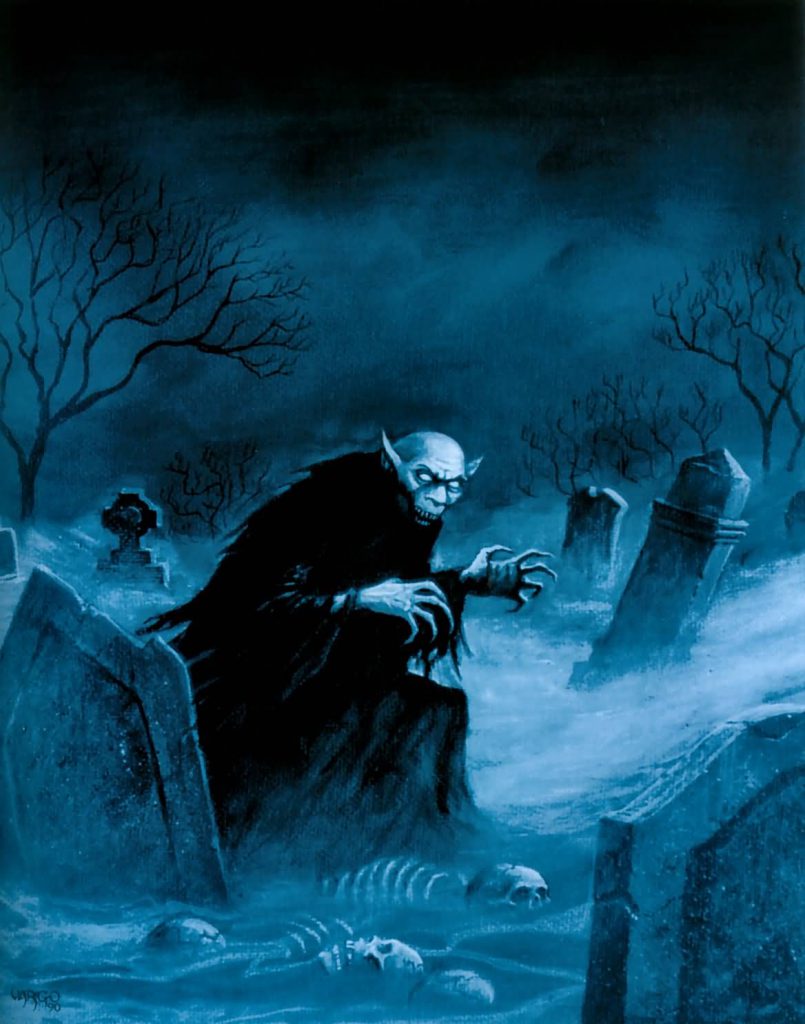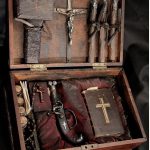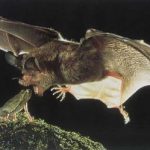In the Chapter 18 of Dracula from Bram Stoker, we found an interesting description from Professor Van Helsing

“The nosferatu do not die like the bee when he sting once. He is stronger; and being stronger, yet have more power to work evil. This vampire which is amongst us is of himself so strong in person as twenty men; he is of cunning more than mortal, for his cunning be the growth of ages; he have still the aids of necromancy, which is, as his etymology imply, the divination of the dead, and all the dead that he can come nigh to are for him at command; he is brute, and more than brute; he is devil in callous, and the heart of him is not; he can, within limitations, appear at will when, and where, and in any of the forms that are to him; he can, within his range, direct the elements; the storm, the fog, the thunder; he can command all the meaner things: the rat, and the owl, and the bat – the moth, and the fox, and the wolf; he can grow and become small; and he can at times vanish and come unknown. .
But to fail here, is not mere life or death. It is that we became as him; “Take it, then, that the vampire, and the belief in his limitations and his cure, rest for the moment on the same base”. For, let me tell you, he is known everywhere that men have been. In old Greece, in old Rome; he flourish in Germany all over, in France, in India, even in the Chernosese; and in China, so far from us in all ways, there even he is, and the peoples fear him at this day. He have follow the wake of the berserker Icelander, the devil-begotten Hun, the Slav, the Saxon, the Magyar. So far, then, we have all we may act upon; and let me tell you that very much of the beliefs are justified by what we have seen in our own unhappy experience. The vampire lives on, and cannot die by mere passing of time; he can flourish when that he can fatten on the blood of the living. Even more, we have seen amongst us that he can even grow younger; that his vital faculties grow strenuous, and seem as though they refresh themselves when his special pabulum is plenty. But he cannot flourish without his diet;
In the records are such words as ‘stregoica’ – witch, ‘ordog,’ and ‘pokol’ – Satan and hell; and in one manuscript this very Dracula is spoken of as ‘wampyr,’ which we all understand too well. There have been from the loins of this very one great men and good women, and their graves make sacred the earth where alone this foulness can dwell. For it is not the least of its terrors that this evil thing is rooted deep in all good; in soil barren of holy memories it cannot rest.”
John Heinrich Zopfius in his Dissertation on Serbian Vampires, 1733, says:
“Vampires issue forth from their graves in the night, attack people sleeping quietly in their beds, suck out all the blood from their bodies and destroy them. They beset men, women and children alike, sparing neither age nor sex. Those who are under the fatal malignity of their influence complain of suffocation and a total deficiency of spirits, after which they soon expire. Some who, when at the point of death, have been asked if they can tell what is causing their decease, reply that such and such persons, lately dead, have risen from the tomb to torment and torture them.”
Scoffern in his Stray Leaves of Science and Folk Lore writes:
“The best definition I can give of a vampire is a living, mischievous and murderous dead body. A living dead body! The words are idle, contradictory, incomprehensible, but so are vampires.”
George Conrad Horst, a German philosopher and occultist, defines a vampire in his writings as such:
“A Vampyr is a dead body which continues to live in the grave, which it leaves, however, by night for the purpose of sucking the blood of the living, whereby it is nourished and preserved in good condition, instead of becoming decomposed like other dead bodies.”
Montague Summers (The Vampire, His Kith and Kin 179) gives the common description of how vampire’s were always said to look:
A Vampire is generally described as being exceedingly gaunt and lean with a hideous countenance and eyes wherein are glinting the red fire of perdition. When, however, he has satiated his lust for warm human blood his body becomes horribly puffed and bloated, as though he were some great leech gorged and replete to bursting.








